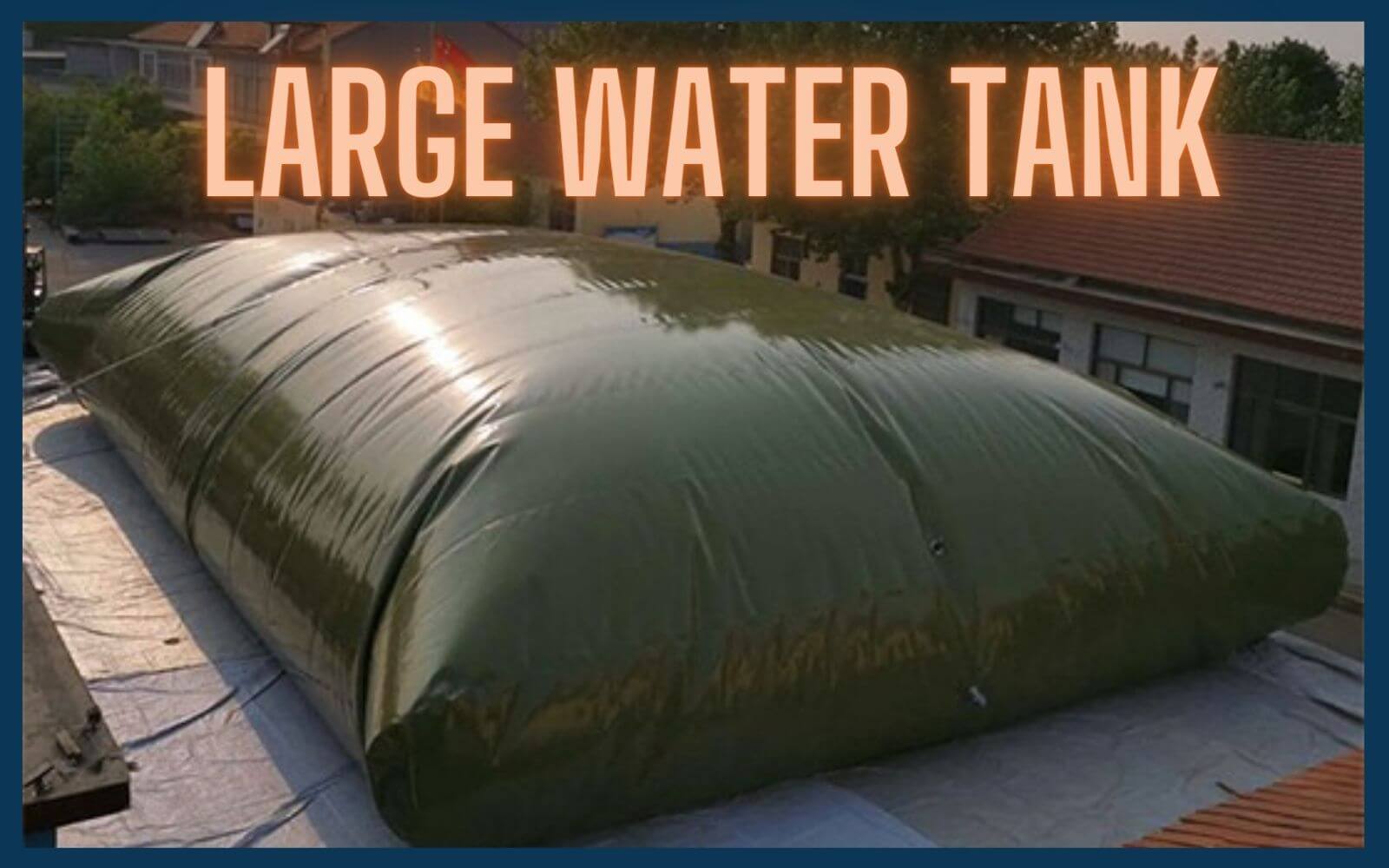PLASTIC WATER TANK
Water is essential for life, but finding enough water storage for your home, business, farm work, or industrial sites can be a challenge. Whether you need to store drinking water, irrigation water, or emergency water supply, you need to consider the cost and quality of your water tank. In this article, we will explore how much does a large water tank cost and why flexible water tanks are the best option for your needs.
Material Choice
Traditional tanks includes the concrete tanks, steel tanks, fiberglass tanks which are durable, but costly.
Plastic tanks contains 2 types: rigid tanks and flexible tanks. Rigid water tanks mostly means PE tanks, rigid PVC tanks. Flexible tanks consist by water bladder tanks, potable water tanks, fuel bladder tanks, chemical tanks, and custom tanks.
Besides the different materials variety, the thickness also needs to consider into the cost. Like the flexible tanks, mateiral thickness from 0.4mm to 2.0mm.
Sizes
For water storage, the size ranges from 100L to 1,000,000L(25gal to 250,000gal). Mostly the tanks have standard sizes, like: 1000L, 3000L, 5000L, 10,000L, 20,000L, 50,000L etc. Besides the flexible tanks, other tanks the custom size price is higher than the standard ones.
And when we say the large water tanks, the size is over 20,000L, like 50,000L, 100,000L, 200,000L, 500,000L, 800,000L and 1,000,000L. The large tanks are widely used in industrial sites worked as fracking tank, working water storage tanks, wastewater treatement, etc.
Installation Expenses
The cost of operation is also a big part to consist the cost of the tank:
Steel tank, as the tank is heavy, the transportation at site is not an easy thing, then the labor cost is expensive.
Concrete tank, the construction cost is big, compare with the experienced labor construction cost, the raw mateiral almost can ignore.
Compare with those above, the plastic tanks, the installation expense is much better. Because the plastic tanks with lightweight and almost no need construct at site.
Location of Tanks
Besides those features above, there is another point need to consider, the shipment.
When we consider the shipment, we should think abou the size of the package, as at the same distance, the smaller package, the cheaper shipping cost.
So in here, we only compare 2 various tanks: rigid tanks and soft tanks.
Rigid tank, the size is same or over the loading capacity, like the steel tank, the loading is 1000L, the packing is 1.1m3.
Soft tank, as it can fold when empty, so the packing size can save a lot, a 1000L tank, the packing is 0.1m3.
That’s why the flexible tanks are widely chosen for project which are running at remote sites.
Material Cost Breakdown
Steel Tanks
Steel tanks, sometimes contain 2 types, stainless steel tanks and carbon steel tanks. The performance is the best, UV-resistant, be compatible to storage liquid. Price ranges from USD2,000 to 300,000.
Polyethylene Tanks
PE tanks are popular for their durability and relatively lower cost compared to other materials. Prices typically range from USD500 to USD5,000, depending on capacity, the PE tank, standard sizes: 1000L, 1500L, 3000L.
Fiberglass Tanks
Known for their corrosion resistance, fiberglass tanks are moderately priced, ranging from USD1,000 to USD18,000, depending on size and features.
Concrete Tanks
Concrete tanks are durable but tend to be more expensive, with costs ranging from USD1,500 to USD20,000 or more, considering installation complexities.
Flexible Tanks
It’s popular for the flexibility, providing UV-resistant and various mateirials for different liquid purpose, like fuel, water, chemical, potable water. Price ranges from USD100 to USD10,000, depending on the size and working condition. For instance, the drinking water tank cost is higher than wastewater tank.
Installation Costs
Installation costs vary widely based on factors like tank size, foundation requirements, and labor rates. On average, installation costs can range from $100 to $5,000.
Additional Features and Customization
Advanced features and customization can add extra expenses. Filtration systems, coatings, and monitoring tools may contribute anywhere from $200 to $2,000 to the total cost.
DIY Installation: If feasible, consider a DIY installation to save on labor costs.
Basic Models: Choose the standard sizes, or consider the flexible tanks, the custom service no extra expense.
Bulk Purchase: Wholesale price is much better than retails.
The cost of a large water tank is a multifaceted consideration. By understanding the factors that contribute to the overall expense, consumers can make informed decisions that align with their specific needs and budget to choose the right tanks.








